A breathtaking Byzantine mosaic, considered one of southern Israel’s most remarkable archaeological discoveries, has finally been unveiled to the public after spending over three decades hidden from view. The spectacular artwork, featuring 55 intricately designed medallions, is now permanently displayed at the Merhavim Regional Council headquarters in the Western Negev.
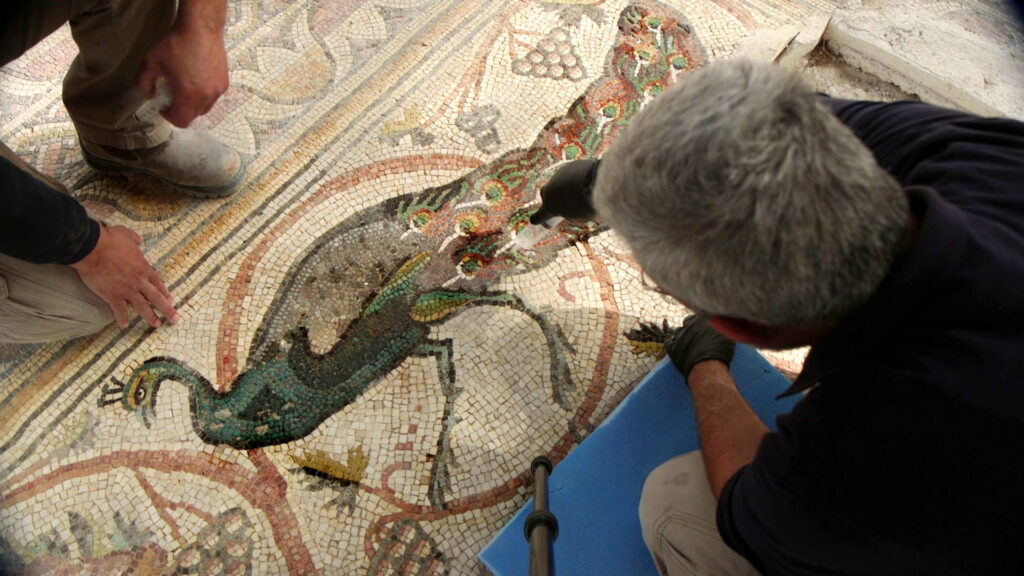
The Israel Antiquities Authority conservation team working on the mosaic’s preservation. Photo: Emil Aladjem, Israel Antiquities Authority
The colorful mosaic was initially discovered in 1990 during agricultural work south of Kibbutz Urim, near the Gaza Strip. Following its initial excavation by archaeologists Dan Gazit and Shaike Lender from the Israel Antiquities Authority, the mosaic was carefully covered and protected until recently, when it was undergoing extensive conservation efforts.
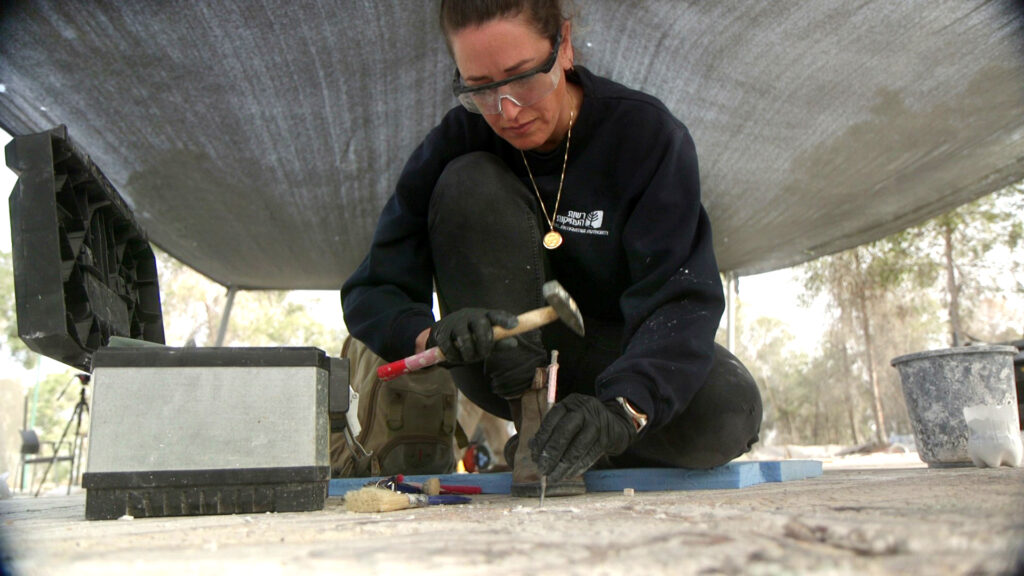
A Window into Byzantine Life
The mosaic, dating back approximately 1,600 years to the Byzantine period (324-638 CE), presents a vivid tableau of ancient life through its 55 richly detailed medallions. The artwork depicts an extraordinary range of subjects, including mythological characters, hunting scenes, exotic animals, baskets of fruit, and glimpses of everyday Byzantine life.
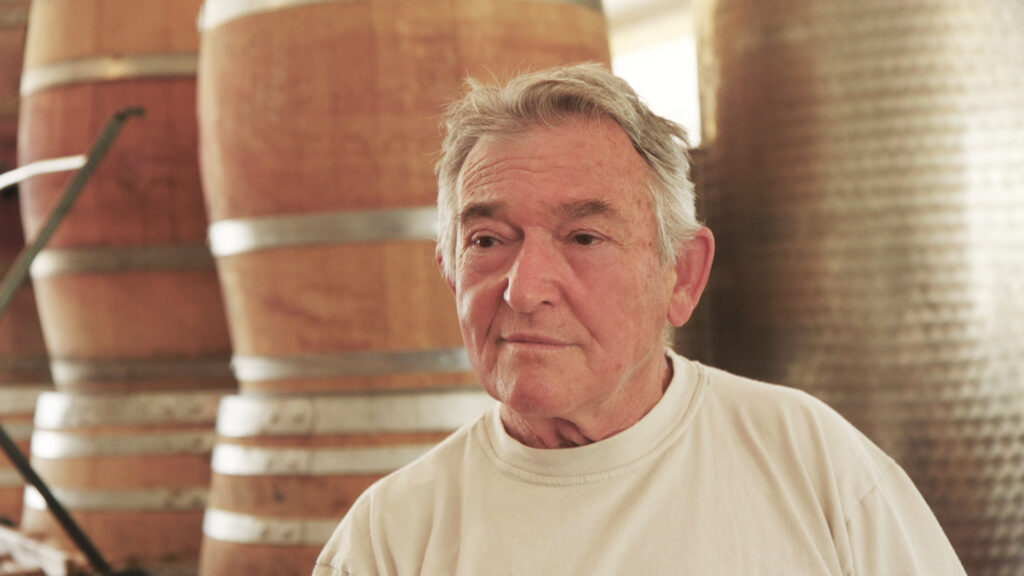
Shaike Lender, who directed the mosaic excavation in 1990. Photo: Emil Aladjem, Israel Antiquities Authority
“This is a unique mosaic from the Byzantine period,” explains Shaike Lender, one of the original excavators. “It presents 55 richly detailed medallions with mythological characters, baskets of fruit, exotic animals, scenes from everyday life, hunting scenes and more. The mosaic was clearly made by the hand of a true artist.”
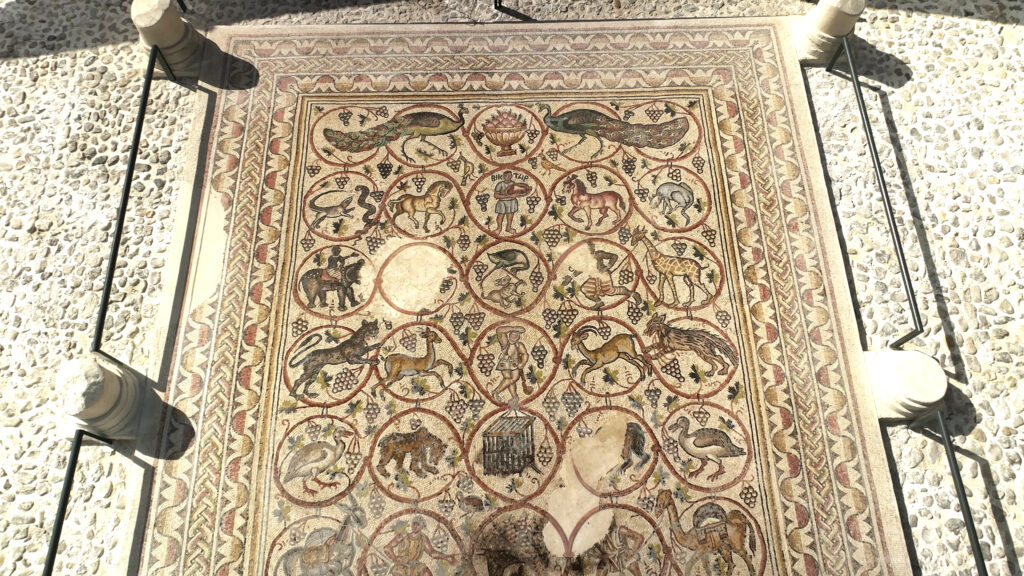
The impressive mosaic following conservation work. Photo: Emil Aladjem, Israel Antiquities Authority
The masterpiece is constructed from small mosaic stones in various colors, enhanced with glass and pottery fragments that create a striking visual variety. This sophisticated technique demonstrates the high level of craftsmanship achieved by Byzantine artisans working in this remote desert location.
Monastery and Wine Production Center
Archaeological evidence reveals that the mosaic was the centerpiece of a large monastery complex that sustained itself through wine production. Excavations uncovered a substantial winepress and warehouses filled with storage jugs that were manufactured on-site, indicating a thriving commercial operation.

The mosaic is decorated with hunting scenes, animals and scenes of everyday life. Photo: Emil Aladjem, Israel Antiquities Authority
The monastery’s strategic location along an ancient trade route proved crucial to its success. According to researchers, the settlement sat on a border between the inhabited regions and the desert, serving travelers on the historic Nabataean-Roman spice trail connecting Halutza in the Negev with the Mediterranean port of Gaza.
“This road served as a kind of border between the desert and the inhabited part of the country during the Byzantine period, and perhaps even earlier during the Roman period,” notes the archaeological team. The large settlement, spanning several hundred dunams, provided safe overnight accommodation for merchants and travelers, protecting them from potential raids by local Bedouin tribes.
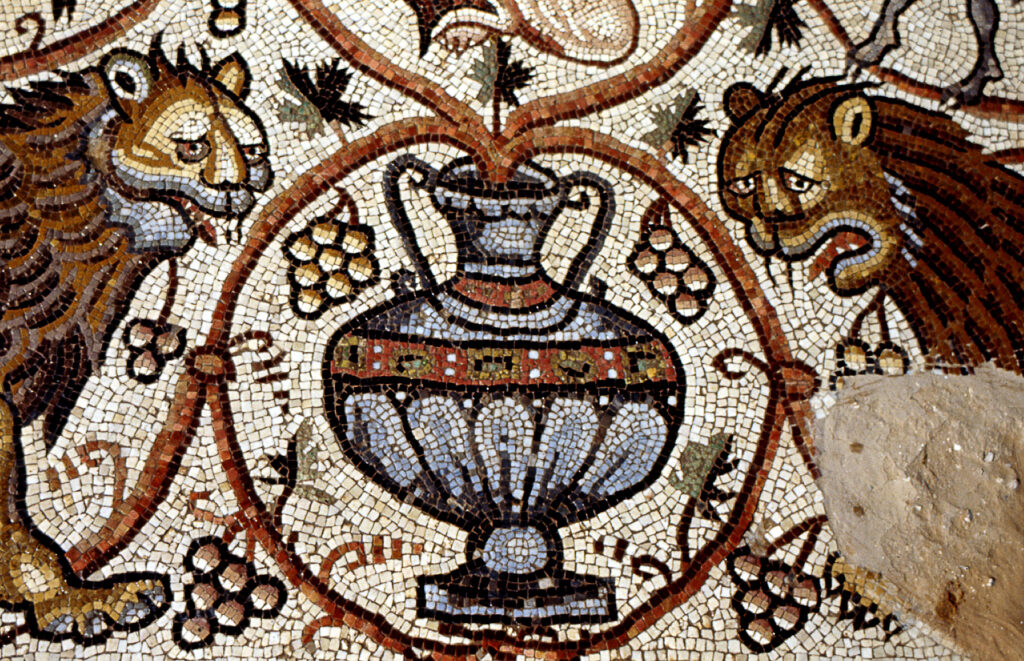
Scenes depicted in the mosaic as uncovered in the excavation. Photo: Nachshon Sneh, Israel Antiquities Authority.
Conservation and Public Access
Over the years following its discovery, the mosaic’s condition gradually deteriorated due to exposure to the elements. Recognizing the urgent need for intervention, the Israel Antiquities Authority launched a comprehensive conservation project to preserve this archaeological treasure.
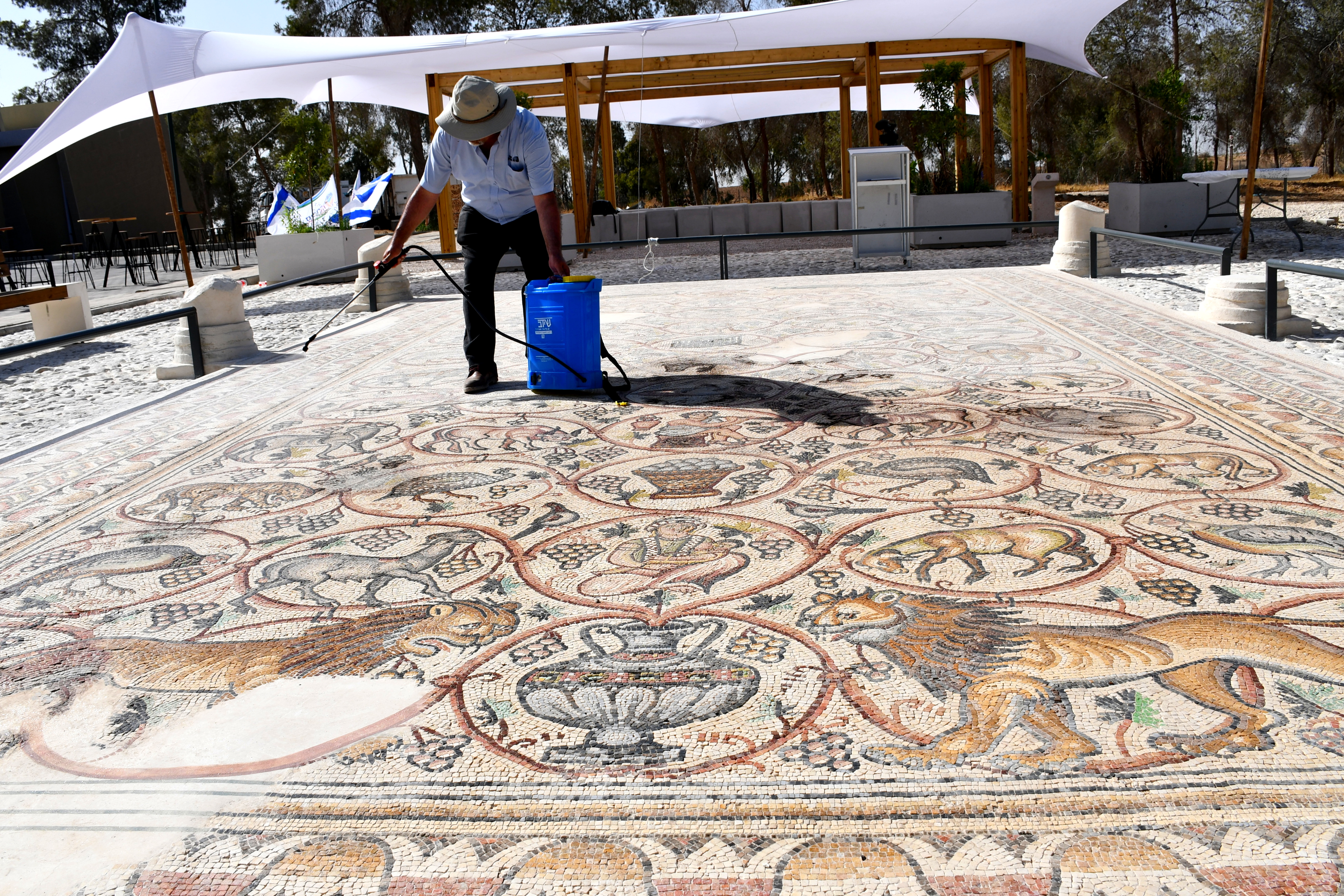
“Over the ensuing years since its discovery, the mosaic floor’s state of conservation deteriorated,” said Ami Shahar, Conservation Department Head at the Israel Antiquities Authority. “It was re-exposed, treated and strengthened, and transferred from its original exposed location to the Merhavim Council’s enclosed compound.”
The painstaking conservation work has transformed the site into a fully protected archaeological garden, complete with explanatory signage, accessible pathways, and visitor seating areas.
Cultural Heritage Initiative
The mosaic’s public unveiling represents a significant milestone in the “Antiquities Right at Home” project, a collaborative initiative between the Israeli Ministry of Heritage and the Israel Antiquities Authority. This program aims to make archaeological treasures accessible to the public by integrating them into urban and community spaces.
The inauguration ceremony, held on May 25th, brought together Heritage Minister Amichai Eliyahu, Merhavim Regional Council Head Shai Hajaj, and Israel Antiquities Authority Director Eli Escusido. Local students and community members participated in archaeological activities, creative workshops, and environmental planting initiatives.
“Especially in these days, it is of great importance to reveal historical gems in the Gaza Envelope region, such that they will be visitor attractions and increase traffic to this vital area,” emphasized Eli Escusido.
A Living Testament to History
For Merhavim Regional Council Head Shai Hajaj, the mosaic represents more than just an archaeological artifact. “This beautiful mosaic, a living testimony to life that existed in the Negev some 1,500 years ago, will be preserved here and become a focal point for visits and learning—for tourists, students, and residents from across the country,” he said.
The site now serves as a bridge connecting the region’s ancient past with its contemporary community. Visitors can experience one of Israel’s most beautiful and historically significant mosaics in a purpose-built setting that ensures its preservation for future generations.
This remarkable discovery continues to shed light on the sophisticated Byzantine communities that once flourished in the Negev desert. It demonstrates how ancient trade routes fostered cultural exchange and artistic achievement even in seemingly remote locations.




